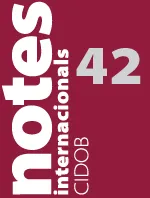Do emigrants finance European convergence? Toward an EU remittance policy

Notes internacionals CIDOB, núm. 42
-The EU is the main issuer of remittances in the world, most of which are directed toward its own member countries.
-Rumania receives more remittances from its emigrants than transfers from European institutions, structural funds included. And it is not the only country in the Union that receives more from its emigrants than from Brussels.
-Nevertheless, Brussels only develops efforts regarding the remittances that end up outside the Union, having no policy in place for those received by its own member countries.
-According to the Stockholm Program, before 2012 the European Commission must present proposals on its remittance policy in several areas. The objective of this document is to analyze several options.
The European Union has become the main issuer of remittances in the world. Its remittances almost double those of the United States, and the Union counts four Euro zone countries among the ten main issuers of remittances in the world. The volume issued by the UE is so great that it is equal to the entire GDP of five of its member countries. According to the IMF, in 2010 the GDP of Lithuania, Latvia, Cyprus, Estonia and Malta totaled $111 billions, while the remittances of the EU came to $95 billionsthat same year.
It is important to note that the global preponderance of the EU remittances has a short history. In the year 2000 the United States remitted more funds, and those issuing from Europe only doubled their figures in recent years.
Nevertheless, the most important dimension of European remittances is indeed measured in millions, but millions of people, not of Euros: the people who send and receive them. Though their exact profile is not known, since to date a pan-European investigation of remitters has not been carried out, we estimate that they come to at least 30 million issuers, while the beneficiaries could reach twice that number. That is to say, European remittances involve at least 90 million persons who do not appear in the statistics. Thanks to their remittances, we know that they exist, and that their output represents the principal source of solidarity in the EU, once it surpassed, in 2007, the figure attained by the exemplary European aid to development. It is pertinent to compare remittances and aid to development since both represent international economic fluxes “free rider”.
(...)